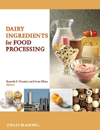Company: Corbion
Website: www.corbion.com
Ingredient Snapshot: Pristine 100 G and Pristine 2200 reduce the gluten factor by helping bakers create dough that’s less dependent on vital wheat gluten.
Changing and unpredictable protein content in wheat crops is making it harder for bakers to ensure consistent quality in their products, and addressing the problem through supplementation with vital wheat gluten can subject them to volatile pricing and supply issues. Now global functional ingredient provider Corbion introduces two new solutions that shrink the importance of gluten as a factor shaping the product consistency bakers can achieve with the dough improvers they currently use.
The new Pristine 100 G is a drop-in solution that can be added on top of bakers’ existing dough conditioning systems to reduce or eliminate supplementation with vital wheat gluten, without compromising gas retention during proofing, volume and oven spring.
“Bakers build their brands on delivering consistent, predictable product quality," said Kathy Sargent, director of global market strategy at Corbion. “With wheat protein content varying so much by crop year, they’ve been forced to put up with the added cost and inconvenience of supplementing with vital wheat gluten in order to achieve consistency. We developed Pristine 100 G so they don’t have to do that anymore."
In addition to combatting protein variability without gluten supplementation, Pristine 100 G helps bakers eliminate the inconvenience of frequent adjustments to mix time and absorption, and does so without requiring the replacement of existing dough improver systems.
Corbion is also launching Pristine 2200, a dough conditioning system replacement that fully optimizes dough quality and performance, even when wheat protein content is substandard, or when gluten reduction is a goal.
“We want bakers to be able to choose the solution that best fits the needs of their business,” Sargent said. “Offering these new solutions means our customers now have effective alternatives in response to gluten challenges, whether they choose to keep their current dough conditioning system or replace it altogether.”









